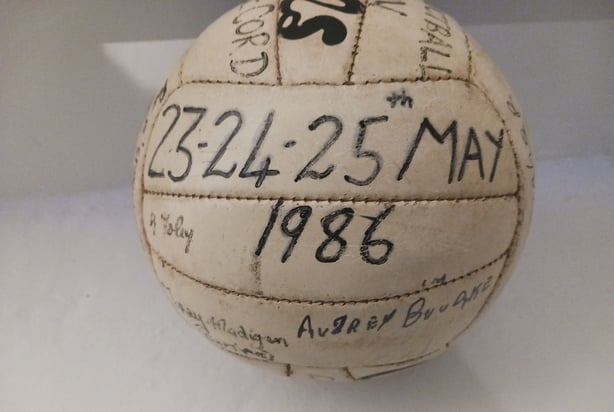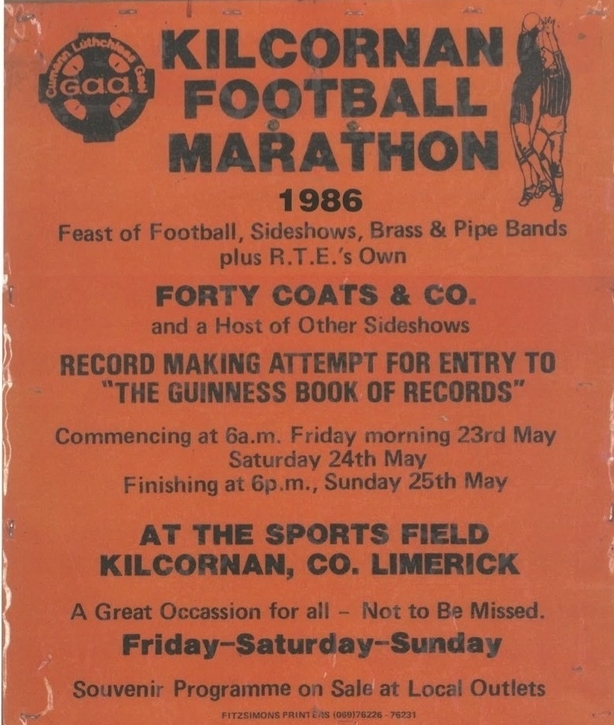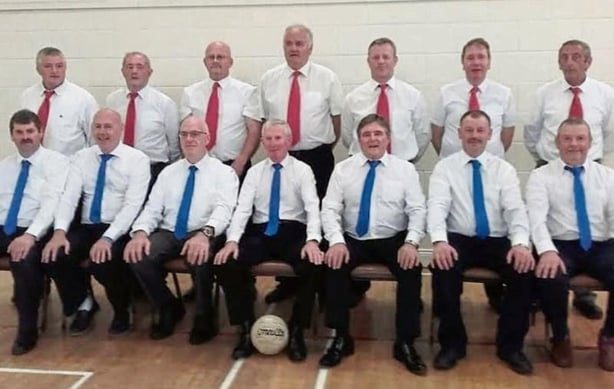Analysis: In May 1986, 14 players took to the pitch in Kilcornan to play some ball, raise some money and set a Guinness World Record
In 1986, the parish of Kilcornan in Co LImerick attempted to set a world record for the longest Gaelic football match. It became a story of ambition, exhaustion and pride in the parish. "Very proud of them. I didn't think they’d do it at the start like. The first 48 hours I thought they were finished." Those were the thoughts of John Downes, manager of the Kilcornan junior footballers when asked about his players’ Guinness World Record attempt for the longest Gaelic football match.
Kilcornan is a parish in west Limerick. Like many communities, it relies on fundraising to support its facilities, projects and services for local people. This often requires creative ways of involving the community and encouraging people to donate money. But a raffle, a table quiz or a fun run wouldn’t do local man Terence Madigan, who came up with the idea of hosting the longest continuous Gaelic football match.
A valid Guinness World Record must tick five boxes. It needs to be verifiable, breakable, measurable, standardisable and can only have one comparable quality — like being the biggest or fastest, but not both. Seeing as there was no previous record for the longest Gaelic football match in the Guinness Book of World Records, the organising committee could be modest with their ambition in the length of the match. 4 hours maybe? 12 hours at a push? 60 hours was agreed upon as it would ensure that the record would be hard to beat.
From Curragh Sound and Vision Studio, the 1986 Kilcornan Gaelic football marathon
The event took place over three days from Friday 23rd to Sunday 25th May 1986 in the grounds of Kilcornan GAA club. The two teams, Curraghchase Rovers and Morenane Mighties, were made up of 14 players from the parish. All 14 players were there for the entirety of the three days, playing football morning, noon and night. They met at 5.30am on Friday morning and converged in the dressing rooms - many of them smoking cigarettes in typical 1980s GAA style.
After Amhrán na bhFiann was played, the match ball was thrown in, but the 'official’ opening wasn’t for another 12 hours when chairman of the Limerick GAA West Board John Carrig took to the back of a trailer stage and declared the event open. Carrig gave an honest evaluation of Terence Madigan’s proposal for the event: "when he rang me about it, I thought that he was mad. Then when I found out that he was serious, I thought it was a great idea."
And it did turn out to be a great idea. It was a tremendous display of community spirit and a united effort by the local GAA club, youth club, community council, community games committee and the ICA. For those in attendance, there was entertainment off the pitch with Irish dancers, local musicians, the Newcastle West Pipe Band and Rathkeale Brass Band. On Saturday afternoon, there was a children’s fancy dress parade and there was even an appearance by TV personality Forty Coats.

The match itself was played on a full GAA pitch with seven players a side. It required extensive preparation, organisation and administration to monitor the match so that it complied with the Guinness World Record rules. Local woman Brigid Griffin was the official records secretary to ensure that times and scores were documented correctly.
Some 19 referees officiated across the 60 hours and the services of intercounty referees John Moloney and Pat Lane were also called upon to officiate the match and to keep score. The final score tally was Curraghchase Rovers 635 goals and 227 points to Morenane Mighties 528 goals to 227 points. A difficult one for the lads to condense into a five minutes highlights package for The Sunday Game.
Breaks were allocated for all players at 15 hours, 34 hours, 41 hours, 54 hours and 56 hours. This usually involved the players retreating to the clubhouse for refreshments, a sit down and a massage if required. A videographer was present across the three days to capture the feelings of the players at each of these intervals: responses ranged from "absolutely A1" to "I have a right pain in my arse".

Understandably, the players' bodies were feeling the pressure of the exhausting endeavour but surprisingly, only one player had to temporarily bow out of the match for a couple of hours due to dehydration. After 54 hours, one player commented that "the oul legs aren’t working as well as they were". He wasn’t the only one concerned about the physical welfare of the players. When the teams were returning to the field with four hours left to play and eager supporters gave a guard of honour and enthusiastic applause, the MC warned "don’t clap the players on the back, don’t even touch them".
Pat Lane blew the final whistle at 6pm on Sunday evening and the exhausted players congratulated each other and posed for photographs. The teams took to the stage where they were praised and presented with a Seiko watch as a memento of the occasion and their commitment to it. John Joe Maher, father of two of the players gushed how it was "a wonderful achievement. It’s a lot more important than winning an All-Ireland final". £12,000 was raised over the course of the three days, an enormous amount of money for a rural community in 1986.
A humble Terence Madigan, who conceived the project and was captain of one of the teams declared that "we [the players] didn’t make or break any record today, It was the Kilcornan parish that did it". He was presented with the match ball, which he still treasures to this day.

Terence has also been the custodian of the documents relating to the occasion, meticulous notes on the committees, referees notes and a visitor book which all attendees were encouraged to sign. These are now precious documents that record a special moment in the social history and the sporting history of Kilcornan parish.
Other world records for the longest Gaelic football match have since been set but Kilcornan’s record will always be the first of its kind in GAA terms. People hold world records for simple, unintentional things such as their height or age, but the parish of Kilcornan achieved a niche record in 1986 through can-do spirit and the need to validate pride in their parish. And scored a collective 3,943 points in the process. Hon the parish indeed.
This story was collected as part of the ‘Share Your Stories’ strand of the GAA: People, Objects & Stories exhibition in the National Museum of Ireland.
Follow the RTÉ Brainstorm WhatsApp channel for all our stories and updates
The views expressed here are those of the author and do not represent or reflect the views of RTÉ







